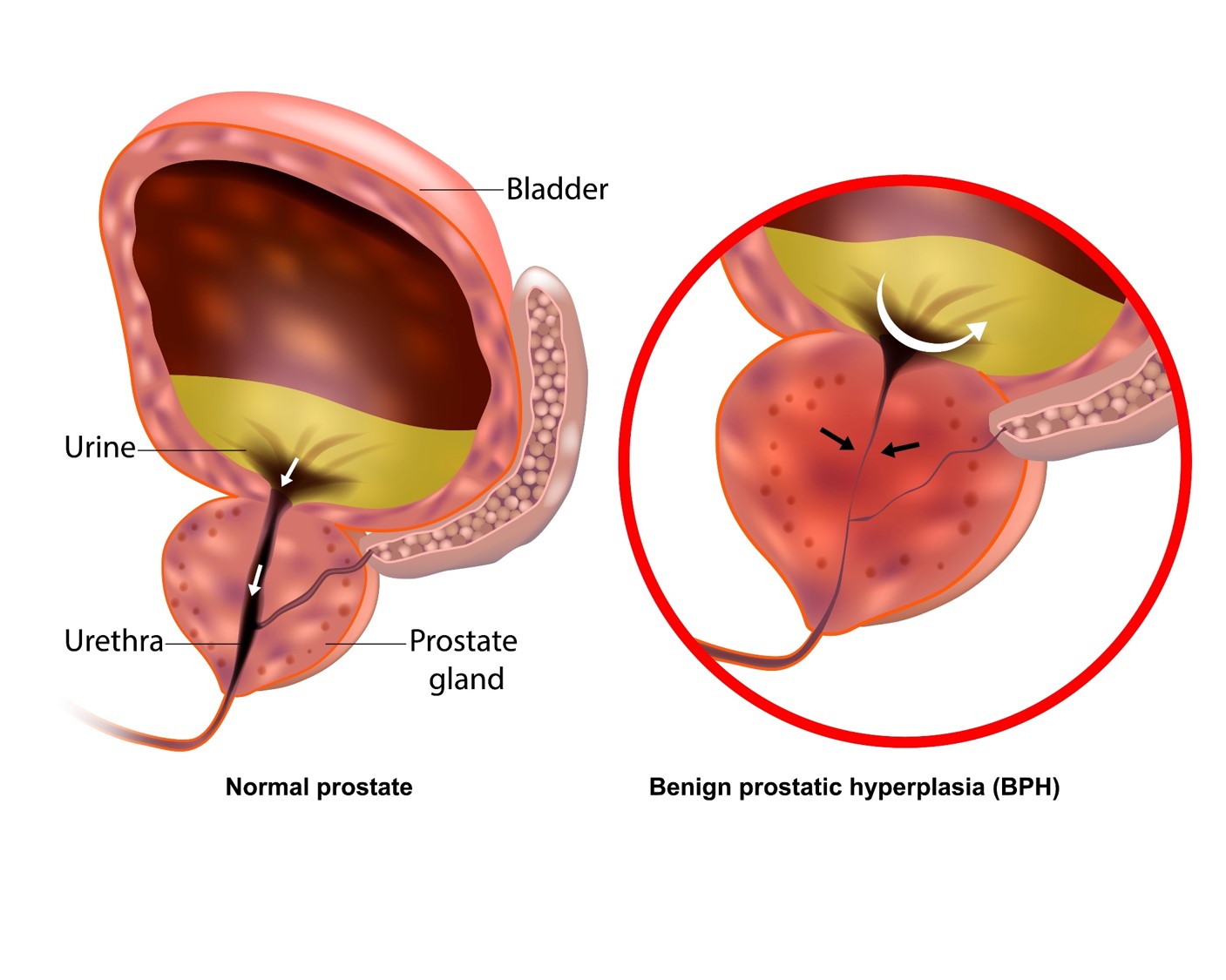Definition
Prostate gland is below urinary bladder and it weighs 20 grams for young men; normally the size is about a chestnut, when it turns into the size of an egg compressing urethra, it would cause voiding dysfunction. The disease is rather prevalent around men over age 50 ; it is also named “ the macrobiotic disease ” because the older a man gets, the greater chance he gets the ailment.
Pathophysiology
Long-term compressed urethra often triggers unsmooth urination; when it happens, diverticulum developed in the urinary bladder causes post-voiding residual urine and calculous formation or infection in urinary bladder. With severe cases, it could affect kidneys and ureters. Patients then suffer from renal function impairment and uremia.
Clinical symptoms
- Obstructive symptoms: conditions of voiding difficulty
When patients take a long time to urinate or the duration of urination is extended or urinating stream becomes intermittent and dribbling, or it requires great abdomen strength to urinate; they have then suffered from typical obstructive benign prostatic hyperplasia. If patients pay no attention to it, long-term urethral compression could incur urethral obstruction and overflow incontinence. When a compressed kidney swollen like a balloon, it is hydronephrosis; and if the problem persists, it will trigger renal failure.
- Irritative symptoms: irritated urinary bladder and frequent urination
Irritative symptoms occur when :
- Voiding frequency increases,
- More than twice nocturia per night takes place,
- Patients are unable to urinate at their own will, and
- There is residual urine and urinary incontinence.

Diagnosis
Doctors inquire about patients’ condition and work on the following examination if necessary:
- urinary inspection and analysis
- blood drawing for prostatic specific antigen ( PSA ).
- digital rectal exam ( DRE )
- If PSA is elevated ( 4 ng/ml ) or DRE is abnormal, patients should have transrectal ultrasonography needle biopsy to check if there is prostatic cancer.
- others :
- uroflowmetry
- cystometry and EMG
- ultrasonography
- cystoscopy
- intravenous pyelography
Treatments
- Conservative treatments
- At the beginning stage, no treatment is needed if there is no urethral obstruction and patients’ voiding function is normal with little amount of residual urine. Regular follow-up check is however necessary.
- There are two types of medical treatment: one is α-blocker and the other is 5α-reductase inhibitor.
- If patients accompany overactive bladder symptoms with urethral obstruction, low dose of anticholinergic agents can be combined with α-blocker and 5α-reductase inhibitor.
- Surgical treatments
- transurethral resection of prostate
- suprapubic prostatectomy
- retropubic prostatectomy
- transperineal prostatectomy
- transurethral green light prostatic vaporization
Prevention
Men over 50 years old should have prostatic examination for benign prostatic hypertrophy and prostatic cancer.

